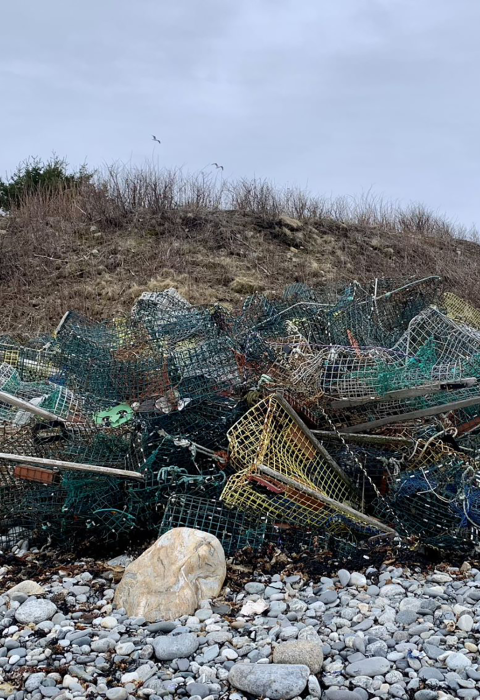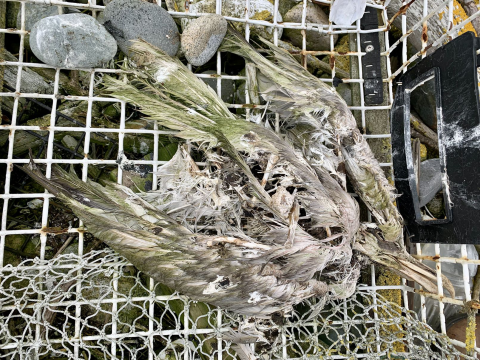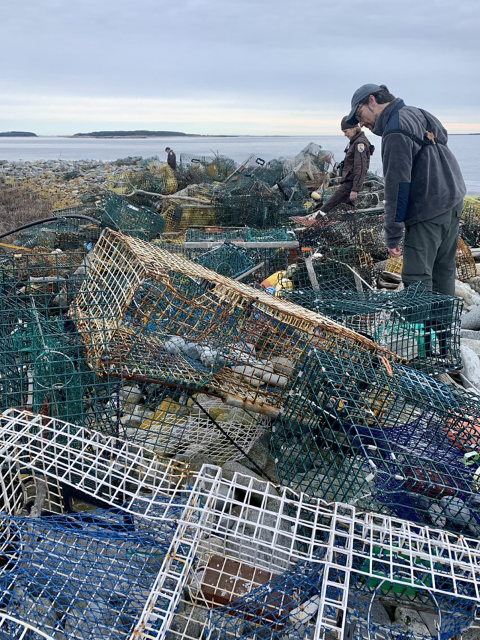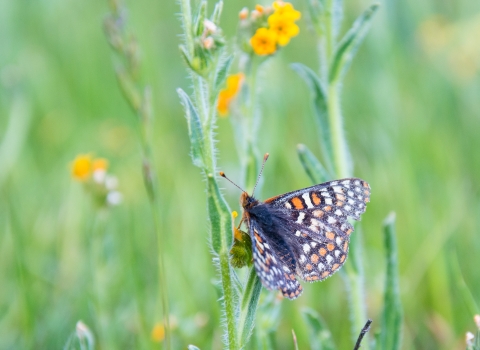A recently published report by U.S. Fish and Wildlife Service staff and partners warns that marine debris in the Gulf of Maine could present a significant threat to birds, as it has elsewhere in the world.
Debris impacts add to the gauntlet of threats birds are experiencing across North America, largely due to human causes like habitat loss and climate change climate change
Climate change includes both global warming driven by human-induced emissions of greenhouse gases and the resulting large-scale shifts in weather patterns. Though there have been previous periods of climatic change, since the mid-20th century humans have had an unprecedented impact on Earth's climate system and caused change on a global scale.
Learn more about climate change . This had led to unprecedented declines.
“Everyone sees the debris, but the connection to birds has not been made as strongly on this coast,” said Caleb Spiegel, one of the report’s lead authors and a wildlife biologist in the Fish and Wildlife Service’s Migratory Birds Program.
With support provided by the National Marine Sanctuary Foundation, the National Oceanic and Atmospheric Administration (NOAA) Marine Debris program partnered with FWS in funding the development of the report, in support of the 2019 Gulf of Maine Marine Debris Action Plan, which called for further assessment of marine debris-wildlife interactions. Though the general effects of marine debris on birds have been documented, the relationship is largely understudied, especially in the Atlantic.
The report outlines three main threats: ingestion, entanglement and entrapment, and habitat degradation.
Ingestion of plastic can lead to a host of problems including malnourishment, toxicity, and even starvation when stomachs fill with undigestible plastic. Entrapment and entanglement prevent birds from moving freely, finding food, and feeding their young. Habitat degradation increases birds’ chances of interaction with plastic, making it more likely for ingestion and entrapment to occur, and also limits spaces where birds can safely nest.
The report highlights predictions from recent models that suggest 99% of the world’s seabird species, and 95% of individual seabirds will have ingested some plastic by 2050. While research was notably limited for the Gulf of Maine, several of the region’s seabird species have been documented to ingest plastic debris. Plastic consumer waste and derelict fishing gear were found to be the most prominent sources of the debris in the region.
Linda Welch, a wildlife biologist at Maine Coastal Islands National Wildlife Refuge, said she often sees effects of debris on her refuge. Welch said a recent monitoring effort discovered 13 tons of debris spanning more than half a mile of coast. This included crucial bird nesting habitat covered with mangled lobster traps and other fishing gear, often stacked several feet high. Birds have routinely been found trapped in such gear.
“In some cases, we think the chicks are hiding in the traps when they’re little, and then they grow, and they can’t get back out. Then they get stuck in there,” she said.
The report outlines strategies to reduce marine debris before it washes ashore and mobilize a broader cleanup when it does. Its recommended solutions fall into three categories: addressing derelict fishing gear, reducing consumer litter, and engaging community scientists.
It also has catalyzed a broad and diverse partner network, which includes fishing industry organizations, government agencies, and nonprofit groups across the Gulf to share data and collectively tackle solutions.
“Efforts like this one are really valuable for bringing partners together. Sharing knowledge and communicating new information between organizations is a really important way to work toward solutions on marine debris problems,” said Demi Fox, Northeast Regional Coordinator for the NOAA Marine Debris Program.
In developing a guide for implementing solutions and identifying further research needs, report authors recruited a network of stakeholders from across the Gulf of Maine to collaboratively prioritize and implement a set of actions. The guide offers initial steps and identifies partners that volunteered to work toward actions within a specific timeframe. It has already spurred progress among the partnership on issues such as identifying opportunities for better quantifying and targeting the clean-up of abandoned gear.
“I’m really excited about [the partnership] because it allows me to have a little tool kit, so that anytime I have any questions or observations that I want to run by people who have more information than I do, I now have that roster," said Laura Ludwig, a key partner at the Center for Coastal Studies in Provincetown MA. She formerly worked at the Gulf of Maine Lobster Foundation, on gear clean-up projects. "That was a really good outcome of this process, this expanded group.”
The solutions-oriented focus on bringing together stakeholders is itself a vital outcome of the report. It has given partners whose work didn’t regularly overlap a reason to come together and close communication gaps.
“One of the most important things to me is for people to understand that we are all connected by the water. Water that feeds us, and provides habitat for wildlife, that gives us our seafood, our employment, our livelihoods, our recreation,” said Ludwig. “The reality is we all share in the problem, and we all share in the solution.”





